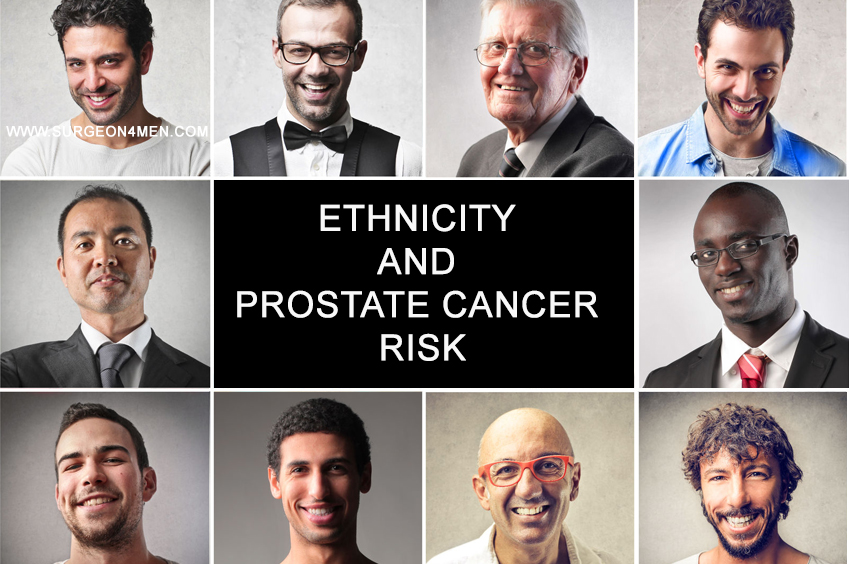Ethnicity and Prostate Cancer Risk
Prostate cancer is the most common non-cutaneous cancer affecting American men and it has the second highest mortality rate in males, second only to lung cancer. According to the American Cancer Society, around 29,480 men died of prostate cancer in 2014.
One in every six American men and one in every five men of African-American descent is diagnosed with prostate cancer in his lifetime. The likelihood of developing prostate cancer increases with the increase in age.
What is prostate cancer?
Prostate cancer is the cancer originating from the prostate gland, a small walnut shaped gland which is responsible for the production of seminal fluid. This fluid provides nourishment to the sperms and provides a medium for their transportation.
Prostate cancer usually remains confined to the gland and grows slowly. However, at times, the cancer is of an aggressive variety and spreads rapidly to organs much beyond the prostate gland.
Relationship of prostate cancer risk with ethnicity
For reasons yet unknown, prevalence rate of prostate cancer is significantly higher in men of African-American descent as compared to white men. The prevalence rates are the lowest among Asian men. Studies have found that the risk of developing prostate cancer in men of African-American descent is twice that of the risk in white men. The risk in white men is twice that of Asian men.
According to the Center for Disease Control (CDC), in 2011, black men had the highest rate of developing prostate cancer. They were followed by whites, Hispanic, Asian/Pacific Islander and American Indian men.
Similarly, the risk of dying due to prostate cancer also remains the highest among men of African-American descent. While the mortality rates of prostate cancer among men continue to show a declining trend, in African-American men, they continue to be more than two times higher as compared to men of other ethnic origins.
Although the reason behind the increased prevalence of prostate cancer in African-American men is not known, it is believed that various factors like genetic mutations, lifestyle differences, eating habits, migration and difference in medical care, combine together to play a role in creating this difference.
Ethnic differences in morbidity and mortality due to prostate cancer
It has been seen that the disease is more severe in Hispanic and African-American men at the time of presentation. Several factors are said to be responsible for this. These include:
- Testosterone levels are 15% higher in young men of African-American descent compared to white men.
- A hormone 5-alpha reductase has been found to be more active in men of African-American descent.
- Factors like disparity in access to health care, insurance status, education and income levels between African-American men and whites may also play a part.
At present, the treatment modalities to treat prostate cancer include radical prostatectomy and radiation therapy. However, these treatments do not come without side effects. The most common side effects seen with these two treatments include urinary incontinence and erectile dysfunction.
When the side effects were compared in various patient populations, it was observed that the incidence of the two side effects was the same in both African-American men and whites after a period of 6 months of undergoing robotic assisted radical prostatectomy. However, at the end of 12 months of surgery, the African-American men had lower rate of side effects compared to white men. It was seen that 60% of African-Americans suffered from erectile dysfunction compared to 76.4% of white men. Similarly, 55.7% of African-Americans suffered from urinary incontinence compared to 69.8% of white men.
Radiation therapy for prostate cancer is often followed by increased risk of other malignancies. In one study, it was observed that African-Americans were diagnosed with a more advanced stage rectal cancer after radiation therapy compared to white men.
Reference:
“Ethnic differences in prostate cancer,” by P Kheirandish and F Chinegwundoh; published in the British Journal of Cancer on August 9, 2011, accessed on August 9, 2015. Retrieved from:
http://www.ncbi.nlm.nih.gov/pmc/articles/PMC3170971/
